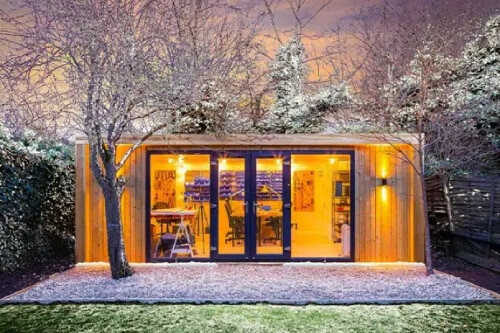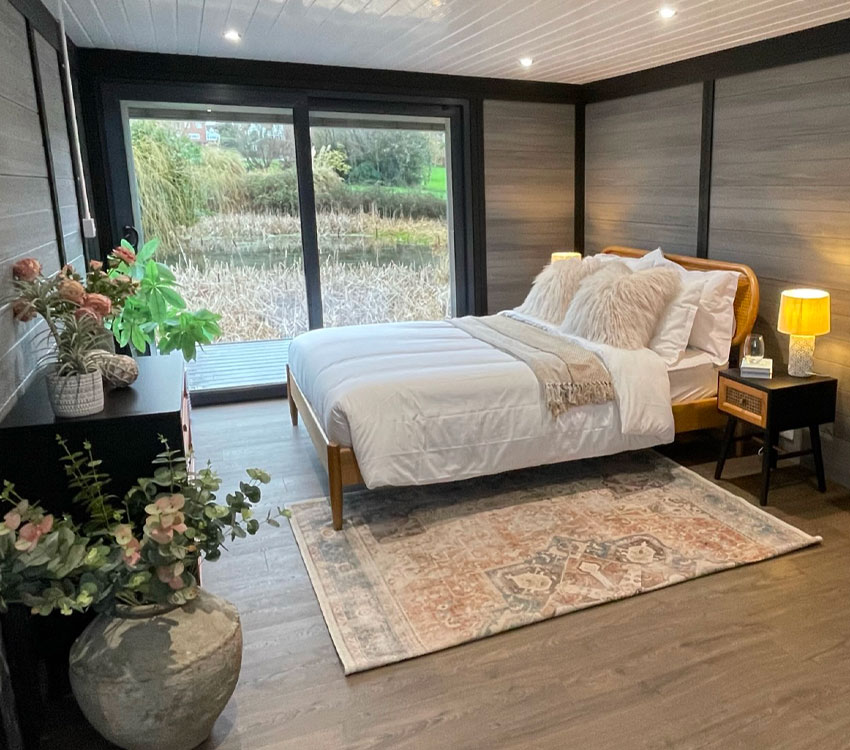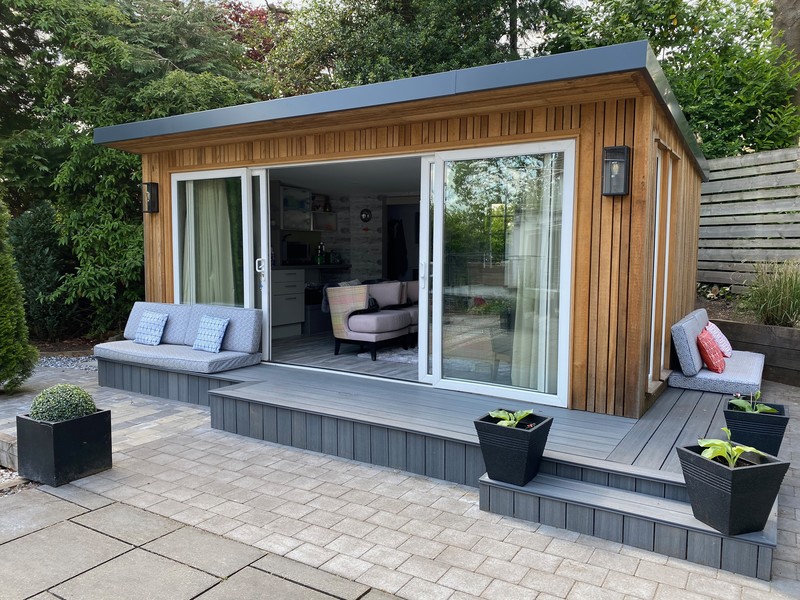Highways-related issues, regardless of whether or not they relate to the building of conservatories, gardens offices or outhouses, or even extensions and gardens are likely to have an important impact on the necessity for permission to plan. These are the major factors to consider: Visibility and Sight Lines
Planning permission is required if the structure is in conflict with drivers' vision lines or intersections at junctions or bends in the road. The planning authority must assess whether a structure could pose a threat to the safety of road traffic.
Closeness to Highway
Planning permission is usually required for structures built near highways, such as extensions or front gardens. There are specific distance regulations to ensure the building doesn't interfere with the safe operation of the highway.
Access and Egress
Planning permission is needed for any changes to the points of access. This could include the creation of new driveways, or altering existing ones to accommodate the new design. This will ensure that access and egress are secure and don't disrupt the flow of traffic.
Parking Facility
If the new structure will affect existing parking spaces or will require parking for additional vehicles an approval for planning is required. The authorities for planning will look into whether the proposed development can provide sufficient parking space for the neighborhood and whether there are parking problems on the street.
Traffic Generation
Developments that are expected to bring in additional traffic, such as gardens designed for business use with clients visiting, need approval from the planning department. The assessment will focus on the effect on traffic volumes as well as safety.
Effect on Pedestrian Access
If the proposed structure would encroach on pedestrian paths or pavements the building must be approved for planning. Making sure that pedestrian access isn't hindered and remains safe is a key aspect to consider.
Construction Impact on Highways
A planning permit could be required to deal with the impacts of highway construction, including the heavy traffic of vehicles and temporary obstructions. Planning authorities may set conditions in order to minimise interruptions to the roads network.
Water runoff and drainage
Another aspect to consider is how the development can affect drainage and runoff. This includes the impact on the highway. The permission for planning will ensure that the structure won't cause flooding or drainage issues that may impact the road.
Street Furniture and Utilities
The building must be approved if it will affect street furnishings (e.g. lamp posts and signs), or underground utilities (e.g. electrical cables, water pipes). The planning authorities will collaborate with the agencies to address these issues.
Highway Authority Guidelines for Compliance:
Local highway authorities have their own guidelines and regulations regarding developments that are in close proximity to highways. Planning permission allows for compliance with road safety regulations.
Noise and Disturbance caused by Traffic:
Permission to plan is required for any new structure that will create more noise and disturbance (e.g. a garden office that is used for deliveries or visits).
Public Transport Accessibility
Developments that could hinder access to public transportation facilities, such as stations for trains or bus stops are subject to planning permission. The effect on passengers of public transport as well as the integration into the transportation network will be taken into consideration.
Highways are an important factor in determining whether to allow planning permission for garden rooms or conservatories. Making sure that the proposed development does not adversely affect the safety of roads, traffic flow pedestrian accessibility, and the overall infrastructure is essential. Talk to the local planner and the highway authority early on in the planning phase to resolve any concerns and ensure compliance. Take a look at the top extension or garden room for more examples including what is a garden room, garden room, do i need planning permission for a garden room with toilet, outhouse building, composite garden rooms, outhouses for garden, garden room planning permission, best electric heater for cabin, garden room planning permission, garden rooms hertfordshire and more.

What Planning Permits Are Required For Garden Rooms, Etc. In Terms Of Environmental Impact?
It is crucial to think about the environmental impact when designing garden rooms or conservatories. Be aware of these environmental issues:
Planning permission is required if a proposed structure affects local wildlife habitats (such as trees, hedgerows, or ponds). An ecological survey might be necessary to evaluate and limit the impacts on biodiversity.
Habitats And Species That Are Protected
Planning permits are required when the property is protected animals (e.g. newts, bats) or is located in or near habitats of Special Scientific Interest (SSSI). In order to protect them the species, it is important to implement specific steps.
Preservation Orders for Trees Preservation Orders
Planning permission is required when the proposed structure will involve the removal of trees or the alteration of trees protected by TPOs. Local authorities will evaluate any impacts and could demand replacement planting or mitigation measures.
Flood Risk and Water Management
Planning permission is required for developments within flood-prone zones. A assessment of flood risk (FRA) may be required to ensure the structure does not increase flood risk and is equipped with drainage solutions.
Sustainability in Construction:
Planning permission is sometimes required to permit the use and adoption of sustainable building materials and techniques. This may include analyzing the efficiency of insulation and energy use and carbon footprints of the construction materials.
Surface Water Runoff and Drainage
Environmental considerations involve the impact of a new building on the runoff from surface water and drainage. Planning permission ensures proper drainage systems to avoid flooding and waterlogging are in place.
Soil stability and soil stability
If the construction could impact soil quality or stability of the land Planning permission is required. It includes issues such as subsidence and erosion of soil on sloped sites.
Air Quality
Planning approval is required for any development that could impact the local air quality, such as ones located close to industrial zones or major highways. This ensures that pollutant levels remain within acceptable limits, and mitigation measures are implemented.
Noise Pollution:
If the use that is planned for the garden room or extension is likely to create substantial noise (e.g. an office or music studio), planning permission is required. Local authorities will review the level of noise to assess the potential impact of those levels on nearby residents and the surrounding environment.
Waste Management:
A well-planned waste management plan is essential during and after construction. The planning permission permits adequate waste disposal, recycling and minimizing environmental impact.
Energy Efficiency
A planning permit may need energy efficiency standards such as the use solar panels, high-performance glass, or other green technologies. This reduces the impact of the new building on the environment.
Compliance with Environmental Regulations:
Environmental regulations at both the national and local level as well as local level, such as the UK Environmental Protection Act. Planning permission assures that all legal obligations are met, and ensures that the project is sustainable for the environment.
Planning permission for garden office, conservatory, outhouse, or extension must consider many environmental impacts. It is important to consult with the local authorities early on in the planning process, so that you can understand their needs. This will also ensure the building is eco-friendly and in line with the relevant laws. See the top rated small office pods for more examples including luxury outhouse, outhouses for garden, outhouse for garden, composite garden office, garden room heater, composite garden office, armoured cable for garden room, garden rooms near me, best electric heater for cabin, Tring garden rooms and more.

Limitations On Location: What Authorizations Do You Require For Garden Rooms As Well As Other Structures?
If you are planning to construct garden rooms, conservatories or outhouses, garden extensions or offices, location restrictions play a crucial factor in determining whether permits for planning are required. Here are some key criteria for location: proximity to boundaries:
Within two meters of the property boundary, any building must not exceed 2.5 meters. If the height exceeds this limit then planning permission must be sought.
Front of the Property:
Planning permission is generally required for any structure that is that are built on the front of the house's main elevation (the side facing the front) since permitted development rights don't allow for forward extensions.
The side of the property:
Side extensions need to comply with certain height and size limitations and often require planning permission when they are larger than the sidewalls of the house.
The rear of the property
Size and height restrictions apply to garden rooms and rear extensions located behind the house. Planning permission is required if the extensions exceed permitted building boundaries.
Designated Zones
In National Parks, World Heritage Sites and Areas of Outstanding Natural Beauty there are more stringent regulations. Planning permits are required for all new structures regardless of size.
Heritage Buildings
Buildings listed on the list are subject to stringent rules. Planning permission and listed-building consent are typically required to construct an entirely new structure or alter the existing structure, no matter where it is situated within the property.
Green Belt Land:
The green belt is protected through strict rules on construction to preserve open space. Special permissions are often required for new constructions or significant alteration.
Flood-prone areas:
If the property is an elevated risk of flooding, then there are extra regulations applicable. This is to ensure that the new construction does not increase the flood risk. It may be necessary to obtain planning permission or a flood assessment.
Urban vs. Rural Settings
In cities, the rules are often different than in rural areas. Rural properties are typically more flexible in regards to the size and location of outbuildings. This varies greatly.
Highways, Public Rights of Way and Public Rights of Way
If the structure is close to highways, roads or public right-of-ways plans approval might be required in order to prevent the structure from hindering safety, view or access.
Shared Ownership and Leasehold Land
If the property is being rented or part of a shared ownership plan, it might require additional permissions. Planning permission could also be required depending on the local laws.
Nearby to Other Structures:
The planning permission must be obtained when the proposed structure is built adjacent to an existing structure or structure, in particular ones located on adjacent properties. This will ensure that there isn't any negative impact on nearby buildings or land.
For advice regarding your particular property's conditions and location, you'll need to speak to the local planning authority. Local laws can influence regulations, so it's important to ensure the compliance of all restrictions. View the top rated warm garden rooms for more tips including outhouse for garden, garden outhouses, insulated garden buildings, garden room planning permission, my outhouse, 4m x 4m garden room, garden out house, outhouses, do i need planning permission for a garden room with toilet, garden office and more.
